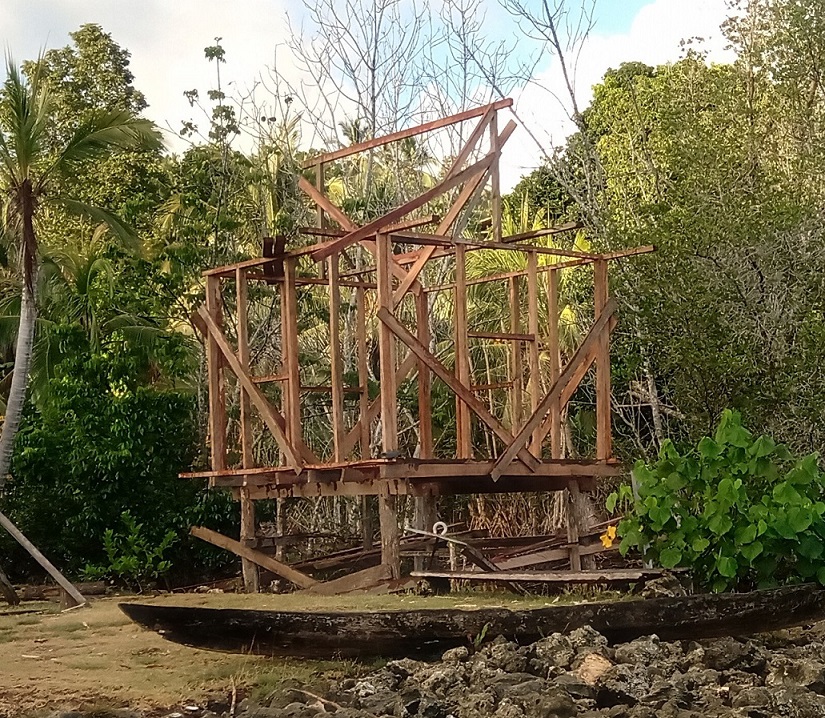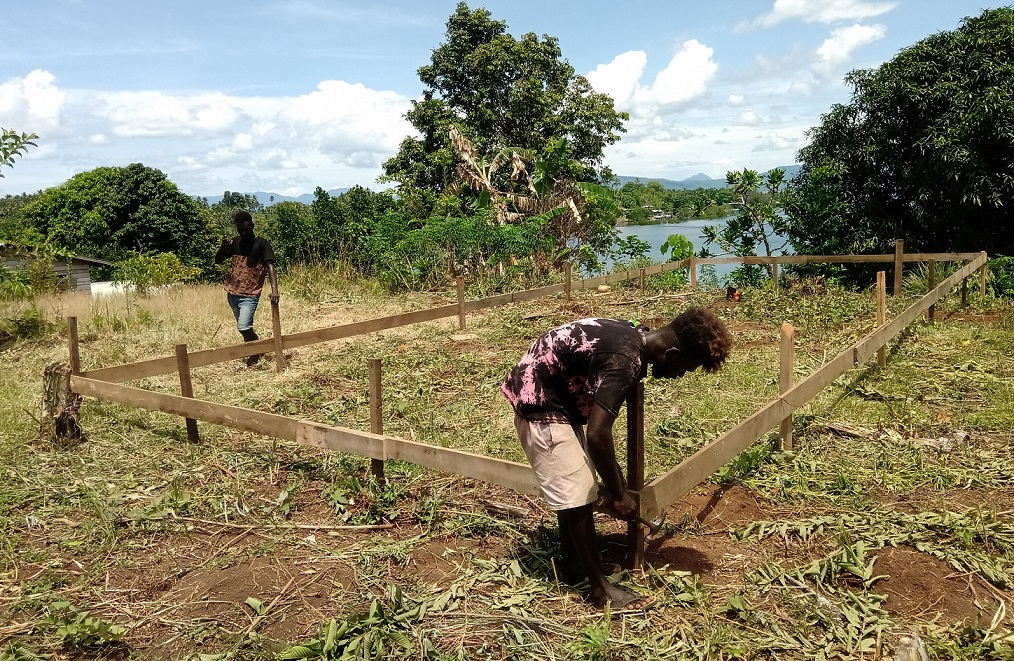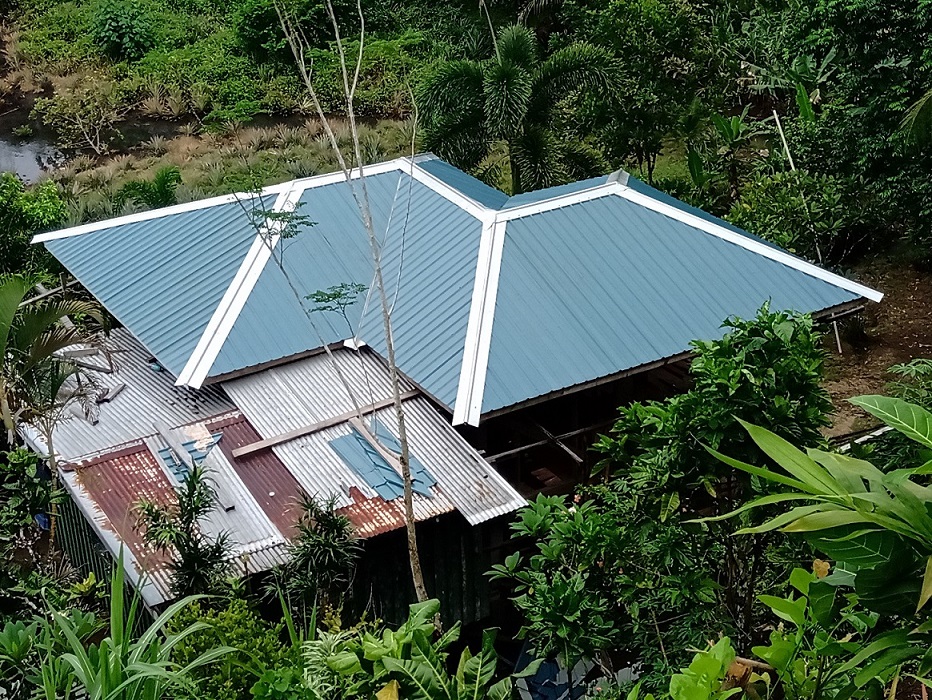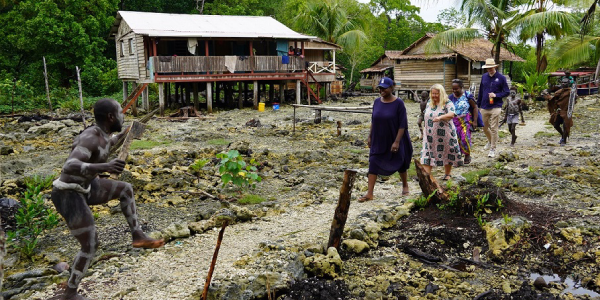By 2030 the country’s population is expected to hit the million mark, if the current reproductive level continues to take an increasing and steady trend.
Already the country has topped the Pacific region as one with a higher rate of population growth.
One of the regions that is expected to see a jump in the number of population is the rural sector and the villages where close to eighty-percent (80%) of our people are living.
Like any other rural communities, the islands of Gizo, Kolomangara, Ranoggah and Vella are experiencing an increase in population as more children are being birth to.
These children then grow up to become adults, get married and also produce their own kids.
It’s a cycle and trend that is projected to continue at a rapid level.
This trend is also a cause of alarm for the government in order to meet and provide services for its people.
One of the resources that is expected to face a lot of challenge is the land.

While the human population continues to increase, our land size remains the same.
And because of this, our people are scouting for land daily to find a place where their children will build their new homes and settle for the future.
I was in Ranoggah in the past week and had seen a huge number of people now moving to settle at new locations – either in land or along the coast.
Some of the villages were less populated back then. Now, the numbers have jumped and new semi-permanent and permanent homes are popping up highlighting the increasing population.
As more young people got married and have children they decided to return and settle at their spouse village.
Over the past months, the rate of newly constructed home is taking a big leap.
This had taken a jump soon after the global pandemic hit in 2020. In the country more families have been forced to flee from Honiara to their islands and provinces.
Others lost their jobs after private businesses closed down due to the financial impact on their operations due to COVID-19 while businesses due to the November 2021 civil unrest – looting and rioting.
In Western Province, this is no exception.
My recent visit around Gizo islands, Kolombangara, Ranoggah and Vella had seen an increase in new homes and settlements popping up.

These homes ranges from semi-permanent to permanent homes.
On Gizo island, the rate of squattering is on the rise and Western Provincial Government is aware of this.
However, very little can be done to address this as people from the surrounding islands continue to come in and build on government land.
At the nearby island of Kolombangara, new homes have been seen being built because a new and young family was formed.
While some of these homes are privately funded, other homes were made possible thanks to the government through their Members of Parliament (MP) for supplying roofing iron and other building materials.
For the Ranoggah-Simbo constituency it is also implementing a policy where one had to erect the structure of their homes and the constituency office will supply the roofing iron or sanitation materials.
And with such support it had been helpful to many rural villagers who cannot afford to buy roofing irons.
A visit by the paper to few of the villages in Ranoggah in the past week had seen new homes being constructed up on the hills and along the coasts.
A local resident of Buri village Sauni Lesimata said, the population is obviously increasing which leads to new homes being constructed in Buri and other communities around Ranoggah.
He said, population pressure is also leading to land pressure in the rural communities.
Mr Lesimata said, land areas are now being booked and divided accordingly to family members to build their homes.

As witnessed by the Solomon Star, the demand for land had also seen some people being forced to build at the coast, within the mangrove areas and over the seafront.
“In the past, some of the areas did not have any people. Now we are seeing people coming in to settle and so the rush for land is now on,” Mr Lesimata added.
A villager from Varovo Rence Joshua said, his village is also experiencing situation of new homes being built as population continue to rise.
“We are seeing construction of new homes on the rise now as new families continue to be formed,” he said.
He also added, the rush to collect housing materials from the constituency office is going on as more people are determined to keen to build their homes.
My recent visit to the village of Pusiju in South Village, has also seen an increase in population and the number of people coming to settle.
Israel Paebara, 70, a villager said, the increase in population is also putting pressure on the land for new families to build.
He decided to build his home at the coast within the mangrove area on a reclaimed land using stones and rocks.
For Mr Paebara, he agreed that in the future, the increase in population will put pressure on the land.
He agreed that land recording and allocation must be done now to avoid dispute in the future.
“This is because once the population increases, the number of homes will also increase which will create issues and challenges to our communities,” he said.
As I reflect on the increasing rate of new home construction at the rural communities, the fact remains, our rural population will continue to increase which will place so much pressure on our land in the coming years.
And because of that land allocation, planning and management by village chiefs and elders must be properly recorded for future generations.
Because the last we want is land dispute over a portion of land.
Thus, its better to act now to sort out all tribal lands before things get out of hand.
By MOFFAT MAMU
In Gizo









